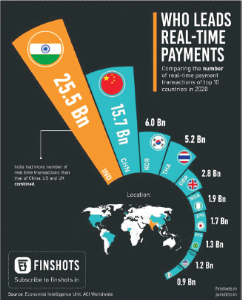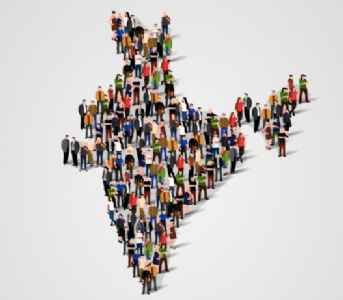Bharat@100: Opitmising The Demographic Dividend
With the increasing size of the working-age population, the dependence ratio (the ratio of population below 20 years and above 65 years to the working age population) will continue to decline from its present level of 48% to about 40% in 2050.
Total Views | 71
-Rajiv Kumar

According to the UN projections, the world economy in 2050, when Bharat will celebrate the centenary as a Republic, will be about $200 trillion in nominal terms and $268 trillion in PPP terms (all figures are from World Bank projections). To regain its pre-colonial share in the global economy, the Indian economy will have to reach a level of $36 trillion in nominal terms and $48 trillion in PPP terms. These will imply our per- capita incomes rising from the present level of $2800 to $22,000 in nominal terms and to $29,000 in PPP terms. Moreover, we must recognize that challenges facing us are enormous and indeed historically unprecedented. To be successful in its endeavour to become a developed economy over the next twenty- five years, India will be the only large country which will complete its economic transition while simultaneously reducing its carbon footprint. Moreover, our continental scale and corresponding diversity magnify these challenges.
Our submission is that given its strengths across multiple dimensions, India can overcome these challenges and achieve these goals as it approaches the centenary of its independence. Indeed, it must, if it has to fulfill the exploding aspirations of its young population. The median age in India today is 28 years, making it one of the youngest countries in the world. This represents a massive opportunity. Our young population combined with the amazing entrepreneurial talent and traditions of our country and the harnessing of the unfolding Al based technological revolution can ensure that India will have regained its share in the global economy by the time we complete 100 years of our post-colonial development. We would have not only successfully erased the sullied colonial legacy but will also be well embarked on the journey to become an exemplar for the rest of the world.
Our young population which is already the largest in the world, if deployed productively, will yield an unprecedented surge in economic growth. This so-called demographic dividend will have to be earned. Our population is estimated to rise to 1.64 billion by 2050. With two-thirds of the population within the working age bracket, it will imply a workforce of more than one billion people. This will be more than double the current size of the working age population and by far the largest working force in the world. Moreover, the demographic potential will further increase on account of three other reasons. First, our average longevity has more than doubled from a mere 32 years at the time of our independence to 70 at present. This is likely to rise further implying that more people will be available for work in future years. Second, our overalllabour force participation rate at present is only 47%, which is significantly lower than in other countries. This will and should increase and may indeed go upto nearly 70% as in the case of countries like China and Korea. Finally, the female participation rate at present is an abysmal 23%. This will also rise as fertility rates decline further; women education and skilling levels improve; and the eco-system changes to facilitate female employment.
With the increasing size of the working-age population, the dependence ratio (the ratio of population below 20 years and above 65 years to the working age population) will continue to decline from its present level of 48% to about 40% in 2050. This is the window during which India must make the fullest advantage of its positive demographic structure which represents the world's largest store of human capital. The necessary condition for harnessing this human capital stock is to ensure universal access to high quality health and education services.
This will require a tremendous societal effort led by the government at both the central and state levels. Health and Education are the key to harnessing the demographic dividend which is available to the country. The share of public expenditure on these two sectors at all levels of governments must necessarily be on a rising scale. Access to high quality health and education services also improves the equality of opportunities in a society. This will be the key in ensuring that every Indian citizen is able to offer her/his best to the country's progress. A high quality of public education and health services, that is accessible to all citizens irrespective of income levels, social status or geographical distribution is a sine qua non for harnessing the demographic dividend.
But the first step must necessarily be to successfully tackle the high levels mal-nutrition among our children aged below five years. The latest national family health survey reveals that more than a third of our children continue to suffer from mal-nutrition. In major part this may be due to the widespread mal- nutrition among mothers which is reflected in more than 50% of our women suffering from anemia. Further, according to a 2018 UNICEF report, whose findings are endorsed by both NEERI and ICMR, nearly 270 million children in India are exposed to dangerous levels of lead poisoning. Mal-nutrition combined with exposure to lead poisoning implies under development of the children's' brains, making them less capable for pursuing knowledge-based careers. It is important to recognize the enormity of this challenge and to launch a nation-wide awareness raising and mitigation campaign for addressing this challenge in a time bound manner.
The national education policy promulgated by the government of India in 2020 represents a major effort to ensure higher quality of education and skills formation for our young population. It is time now to ensure its effective and early implementation across the country. It may be important in this regard to identify some of the best practices already in use in different parts of the country and to replicate them at scale all over India. Traditional model of expanding education facilities may not work to yield the desired results. Digital technology combined with Al offers a new potential for ensuring that high quality education and skilling can be accessed by the largest number at all stages of education. India will have to harness the digital technology potential to ensure that its burgeoning young population is adequately trained and skilled.
The role of apprenticeships has so far not been fully appreciated in generating the required set ofskills specially in these times of rapid and large-scale technology changes. Combined with an open-campus kind of education structure, apprenticeship could provide the best opportunity for large scale generation of skills actually required by the productive sectors of the economy, whether in manufacturing or services sectors. It is high time that necessary steps are taken to make apprenticeship-based skill formation and education a far more prevalent practice in the country.
Finally, it must be recognized that a young population that is obsessed with narrow selfish interests; driven by regional and communal tendencies; and focused on the pursuit of petty materialism will not yield the desired demographic dividend. On the contrary, our young population must be imbued with the spirit of service to the nation for ensuring national rejuvenation and national integration. This nation building spirit can be generated if our youth is compulsorily required to undergo a year-long national service at the end of their secondary schooling and before taking up any employment or joining a higher education institution. The structure and curriculum of the compulsory national service can be designed to expose the youth to our national aspirations; encourage the spirit of national integration by locating them in different regions across the country; and exposing them to new technology in an easy to learn format. A year-long program of national service may be the most productive investment in improving the quality of our human capital and deploying it to achieve the goal of regaining India's share in the global economy while overcoming the substantial challenges that we face today.
RAJIV KUMAR
Chairman,
Pahlelndia Foundation, Delhi Former Vice Chairman
NITI Aayog.
It should be our national aspiration for Bharat to regain its share in the global economy as it was prior to the onset of colonial rule and the consequential expropriation of our national wealth and suppression of our heritage. It is a well-established fact that India's share in the global economy in 1850 was 18.5%, which was higher than our share in the global population at 16%. By the time we could throw off the yoke of colonial rule, our share in the world economy had drastically declined to a mere 2.8% with the share of the world population remaining around 17%. From being the cynosure of global attention, India become a miserably poor country wrecked by famines, poverty, and deprivation. Even today, our share in the world economy, which is estimated to be $100 trillion is a mere 3% in nominal terms and about 7% in international purchasing power parity (PPP) terms.

According to the UN projections, the world economy in 2050, when Bharat will celebrate the centenary as a Republic, will be about $200 trillion in nominal terms and $268 trillion in PPP terms (all figures are from World Bank projections). To regain its pre-colonial share in the global economy, the Indian economy will have to reach a level of $36 trillion in nominal terms and $48 trillion in PPP terms. These will imply our per- capita incomes rising from the present level of $2800 to $22,000 in nominal terms and to $29,000 in PPP terms. Moreover, we must recognize that challenges facing us are enormous and indeed historically unprecedented. To be successful in its endeavour to become a developed economy over the next twenty- five years, India will be the only large country which will complete its economic transition while simultaneously reducing its carbon footprint. Moreover, our continental scale and corresponding diversity magnify these challenges.
Our submission is that given its strengths across multiple dimensions, India can overcome these challenges and achieve these goals as it approaches the centenary of its independence. Indeed, it must, if it has to fulfill the exploding aspirations of its young population. The median age in India today is 28 years, making it one of the youngest countries in the world. This represents a massive opportunity. Our young population combined with the amazing entrepreneurial talent and traditions of our country and the harnessing of the unfolding Al based technological revolution can ensure that India will have regained its share in the global economy by the time we complete 100 years of our post-colonial development. We would have not only successfully erased the sullied colonial legacy but will also be well embarked on the journey to become an exemplar for the rest of the world.
Our young population which is already the largest in the world, if deployed productively, will yield an unprecedented surge in economic growth. This so-called demographic dividend will have to be earned. Our population is estimated to rise to 1.64 billion by 2050. With two-thirds of the population within the working age bracket, it will imply a workforce of more than one billion people. This will be more than double the current size of the working age population and by far the largest working force in the world. Moreover, the demographic potential will further increase on account of three other reasons. First, our average longevity has more than doubled from a mere 32 years at the time of our independence to 70 at present. This is likely to rise further implying that more people will be available for work in future years. Second, our overalllabour force participation rate at present is only 47%, which is significantly lower than in other countries. This will and should increase and may indeed go upto nearly 70% as in the case of countries like China and Korea. Finally, the female participation rate at present is an abysmal 23%. This will also rise as fertility rates decline further; women education and skilling levels improve; and the eco-system changes to facilitate female employment.
With the increasing size of the working-age population, the dependence ratio (the ratio of population below 20 years and above 65 years to the working age population) will continue to decline from its present level of 48% to about 40% in 2050. This is the window during which India must make the fullest advantage of its positive demographic structure which represents the world's largest store of human capital. The necessary condition for harnessing this human capital stock is to ensure universal access to high quality health and education services.
This will require a tremendous societal effort led by the government at both the central and state levels. Health and Education are the key to harnessing the demographic dividend which is available to the country. The share of public expenditure on these two sectors at all levels of governments must necessarily be on a rising scale. Access to high quality health and education services also improves the equality of opportunities in a society. This will be the key in ensuring that every Indian citizen is able to offer her/his best to the country's progress. A high quality of public education and health services, that is accessible to all citizens irrespective of income levels, social status or geographical distribution is a sine qua non for harnessing the demographic dividend.
But the first step must necessarily be to successfully tackle the high levels mal-nutrition among our children aged below five years. The latest national family health survey reveals that more than a third of our children continue to suffer from mal-nutrition. In major part this may be due to the widespread mal- nutrition among mothers which is reflected in more than 50% of our women suffering from anemia. Further, according to a 2018 UNICEF report, whose findings are endorsed by both NEERI and ICMR, nearly 270 million children in India are exposed to dangerous levels of lead poisoning. Mal-nutrition combined with exposure to lead poisoning implies under development of the children's' brains, making them less capable for pursuing knowledge-based careers. It is important to recognize the enormity of this challenge and to launch a nation-wide awareness raising and mitigation campaign for addressing this challenge in a time bound manner.
The national education policy promulgated by the government of India in 2020 represents a major effort to ensure higher quality of education and skills formation for our young population. It is time now to ensure its effective and early implementation across the country. It may be important in this regard to identify some of the best practices already in use in different parts of the country and to replicate them at scale all over India. Traditional model of expanding education facilities may not work to yield the desired results. Digital technology combined with Al offers a new potential for ensuring that high quality education and skilling can be accessed by the largest number at all stages of education. India will have to harness the digital technology potential to ensure that its burgeoning young population is adequately trained and skilled.
The role of apprenticeships has so far not been fully appreciated in generating the required set ofskills specially in these times of rapid and large-scale technology changes. Combined with an open-campus kind of education structure, apprenticeship could provide the best opportunity for large scale generation of skills actually required by the productive sectors of the economy, whether in manufacturing or services sectors. It is high time that necessary steps are taken to make apprenticeship-based skill formation and education a far more prevalent practice in the country.
Finally, it must be recognized that a young population that is obsessed with narrow selfish interests; driven by regional and communal tendencies; and focused on the pursuit of petty materialism will not yield the desired demographic dividend. On the contrary, our young population must be imbued with the spirit of service to the nation for ensuring national rejuvenation and national integration. This nation building spirit can be generated if our youth is compulsorily required to undergo a year-long national service at the end of their secondary schooling and before taking up any employment or joining a higher education institution. The structure and curriculum of the compulsory national service can be designed to expose the youth to our national aspirations; encourage the spirit of national integration by locating them in different regions across the country; and exposing them to new technology in an easy to learn format. A year-long program of national service may be the most productive investment in improving the quality of our human capital and deploying it to achieve the goal of regaining India's share in the global economy while overcoming the substantial challenges that we face today.
RAJIV KUMAR
Chairman,
Pahlelndia Foundation, Delhi Former Vice Chairman
NITI Aayog.
Bharati Web







